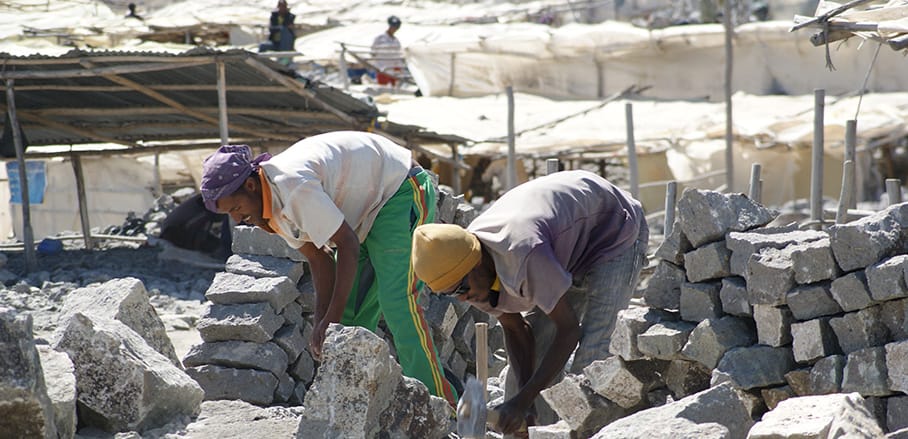From Blade Runner to Habitat IV, Part II: How livelihoods can make or break the City of Tomorrow
By Edmundo Werna
Part II
Part I presented two subsequent paradigms related to the world of work, Fordism and Post-Fordism. Subsequently, it was argued that there are two contrasting trends in the world of (urban) labour: flexibility and stability. This is the second and concluding part of the article, which includes considerations about policies.
Livelihoods for Liveable Cities: Flexi-Localism?
While it is difficult to predict exactly what will happen in the future, it is possible to say that a successful path for urban development will depend to a large extent on how livelihood opportunities are realised. There are worrying indicators of what happens when poverty and inequality are not sufficiently addressed.
While economic growth and creation of new jobs certainly continue to be important, the idea of unlimited expansion may be questioned. The ever increasing quest for flexibility and speed need to be balanced with some focus on localism, with redistribution and improvement of the jobs that already exist.
This article started off by noting that cities and towns have never seen so much wealth and innovation. There is much that can be done to create decent livelihoods by sharing wealth and using innovation to support it.
More attention needs to be given to policies to improve working conditions and social protection, as well as to respect labour standards. Especially in developing countries, most of the poor are working, as they cannot afford to be unemployed. But many times such work is carried out in inappropriate conditions, without security and respect to rights.
The changes in the world of labour coupled with changes in urban development require a re-thinking of the roles of different stakeholders. Throughout the preparation of Habitat III and during the summit itself, many municipal governments and other actors have pledged to localise the SDGs (sustainable development goals). SDG8 is about decent work, therefore it is now time to put ideas into practice.
Local governments have to reinvent themselves and promote better work by adopting labour clauses in procurement, by prioritising job-rich sectors, by exploring the comparative advantages of the local economy, and by promoting businesses which embed the concept of decent work. By establishing an adequate standard of work for its public servants and for those who work in subcontracted private enterprises, a local government already covers a large number of local workers and sets an example for a whole set of private enterprises.
This article highlighted enterprises based at home and in public spaces, respectively. These are examples of areas for policy-making which are closely related to physical planning. Developing housing codes, regulating public areas and enabling the use of such types of space as workplaces may also go a long way.
It is important to discuss labour-related challenges and plan solutions through participatory approaches. Examples do exist, such as municipal programmes of social dialogue.[8]Van Empel, C. and Werna, E. (2010). Labour oriented participation in municipalities: How decentralized social dialogue can benefit the urban economy and its sectors. Working Paper 280. Sectoral Activities Department. ILO: Geneva. These should also be used to explore and accommodate new forms of organisation of the changing actors in the world of work.
From Habitat III to IV
What will Habitat IV inherit and have to deal with in 2036?
The future city does not have to be Blade Runner-esque. In 1996, Habitat II highlighted the need to generate employment. In this respect Habitat III has taken a step forward by encompassing and integrating working conditions, social protection and labour rights in its Agenda together with employment creation. Under the holistic concept of ‘Decent Work’, this has been promoted by the International Labour Organization and others.
As it is a general Agenda, Habitat III did not include details on the implementation of decent work. But it has opened up possibilities. The urban actors now have the opportunity to promote decent work in a pro-active way.
The concept of the future city in the New Urban Agenda is yet to be decided upon. Although there are specific recommendations such as for a compact, poly-centric growth, mixed-use streetscapes, prevention of sprawl and transit-oriented development, the Agenda is still open to interpretation in terms of the flexible-permanent spectrum discussed here. It includes references to both extremes, without necessarily explaining how they will be connected.
This article suggests that a balance needs to be sought. The challenge of localism is to strengthen the local economy and respect the local culture, without necessarily isolating the cities (and countries) from an international perspective. It is a difficult balance but one that we should endeavour to achieve. The burgeoning discussions on approaches such as the the solidary and the social economy give us some promising options.
There is no technological determinism for the urban economy. The city of the future will depend on our decisions. In the end, the ‘struggle’ for a better future can only be successful if we manage to work together.
The presentation of the characteristics of Fordism and post-Fordism builds upon a set of analyses carried out during the late 1980s and during the 1990s. Of particular importance is the work of Harvey (1989), further elaborated by the author in Werna (2000). The analysis of the labour-spatial connections and the flexibility-permanence spectrum are new.
- The Urban Spring of May 1st - 3. May 2018
- From Blade Runner to Habitat IV, Part II: How livelihoods can make or break the City of Tomorrow - 12. January 2017
- From Blade Runner to Habitat IV – How livelihoods can make or break the City of Tomorrow - 10. January 2017
